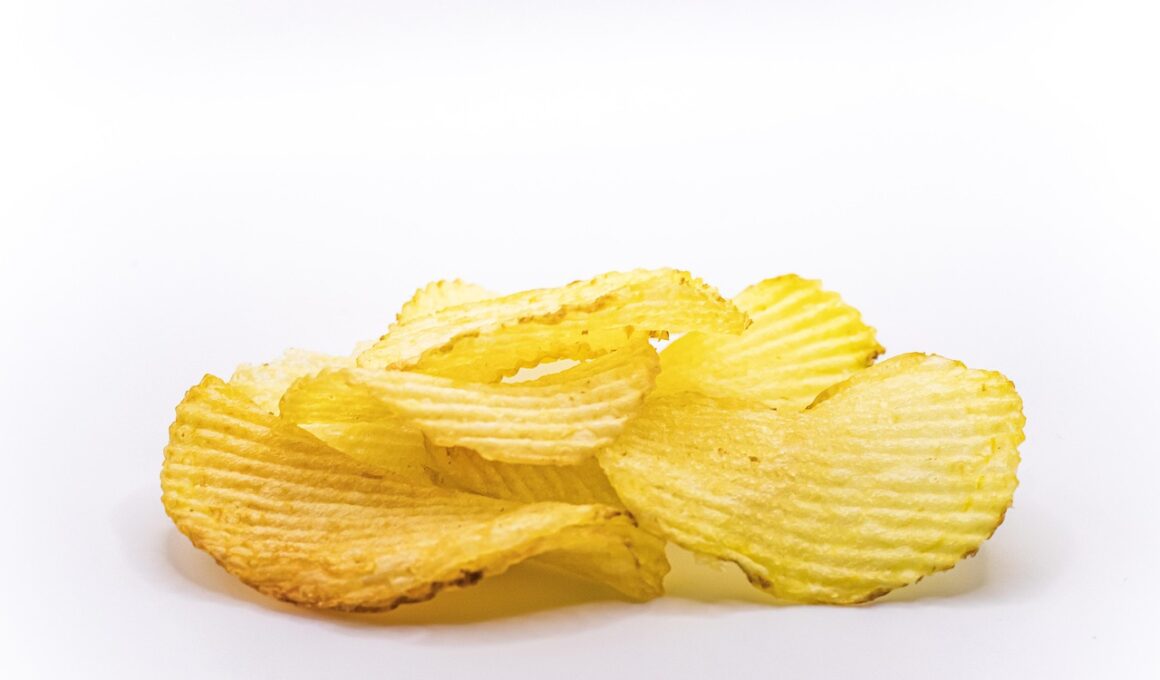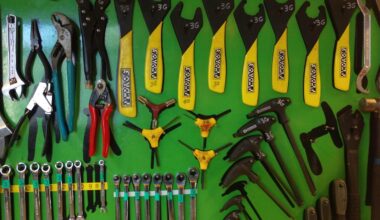Snacking Strategies Between Meals for Sustained Energy
For athletes, managing energy levels throughout the day is essential for peak performance. Snacking between meals can provide the necessary fuel to sustain energy during rigorous training or competitions. Choosing the right types of snacks is crucial. Selection should be focused on nutrient-rich whole foods that offer carbohydrates, proteins, and healthy fats. Examples include nuts, yogurt, and fruits. Proper timing and portion control can also enhance energy levels. While snacking is beneficial, it is essential to avoid excessive quantities that may lead to discomfort during activities. Scheduling snacks two to three hours before major training sessions can optimize energy levels. Furthermore, combining snacks that offer both quick and slow-digesting carbohydrates can prolong the energy release needed throughout athletic endeavors. Staying hydrated complements the snacking strategy, as hydration supports overall performance and recovery. Athletes should develop a personalized snacking routine taking into account their specific training schedules and dietary preferences. To achieve their goals, athletes need to approach snacking with intention and focus. This mindful attitude can significantly enhance their overall performance and energy sustainability and will aid in recovery times after strenuous activity.
Understanding the macronutrient composition of snacks is critical for athletes. Properly balanced snacks include elements of protein, healthy fats, and various carbohydrates. For example, pairing a banana with peanut butter provides both energy from carbs and protein for muscle recovery. It is advisable to aim for a snack that contains around 15-30 grams of carbohydrates and 5-10 grams of protein. This combination will not only help to sustain energy during workouts but will also assist in muscle repair post-exercise. Additionally, athletes should include snacks that contain a high fiber content. Fiber is excellent for digestive health, contributing to longer-lasting energy levels. Some easy-to-prepare snacks include oatmeal topped with fruits, a handful of trail mix, or whole grain toast with avocado. Customizing these snacks to personal taste helps ensure consistency in energy levels and prevents boredom. Experimenting with different combinations of foods can help athletes discover what works best for their bodies before, during, or after training sessions. Always consider how a snack feels in the stomach and its effects on performance. Observing how specific snacks impact workouts can lead to the development of a more effective snacking strategy.
Timing Your Snacks
Determining when to snack is equally as important as the snacks themselves. Athletes should consider activities throughout the day to gauge when they require additional energy. For instance, pre-workout snacking is particularly advantageous for sustaining energy levels. Consuming a snack about one to two hours before exercise can optimize performance during training or competition. It fuels the body, preparing it for physical exertion. Similarly, post-workout snacks play a vital role in recovery, as they help restore glycogen levels and assist in muscle repair. During this time, a snack rich in protein and carbohydrates is essential, such as a smoothie or protein bar. It’s essential to listen to the body’s signals; athletes might find themselves needing to snack more on days with intense training or competitions. Therefore, an athlete must learn to attune their snacking habits according to their individual workout needs. Effective timing and proper nutrition can also have a positive influence on recovery time, reducing muscle soreness and fatigue. Incorporate healthy snacks during appropriate times to support a more effective training regimen.
Snacking on the go is an important strategy for busy athletes. Finding portable and convenient snack options is essential for maintaining energy, especially during hectic schedules. Athletes can prepare snacks in advance to ensure they are always available when needed. Packaged items such as protein bars, nut butter packets, yogurt cups, or fruit can be consumed quickly and easily. Carrying snacks in a gym bag or car ensures that athletes are never left without energy support when they need it. Planning ahead can prevent falling into the trap of unhealthy convenience foods, which can lead to energy slumps. Additionally, there’s a growing trend toward homemade snacks. Creating snacks like energy balls or granola bars allows athletes control over ingredients and portion sizes, resulting in healthier choices. Moreover, engaging family or teammates in making snacks can make it a fun and social experience. Remembering to prioritize nutritious options will ultimately reinforce an athlete’s commitment to their health and performance goals. No matter how busy life becomes, having healthy snacks at hand might make all the difference for maintaining energy and peak performance.
Hydration and Snacking
Hydration plays a crucial role in effective snacking for athletes. To achieve optimal performance, athletes should remember that both food and fluid intake influence their energy levels. The body’s reliance on water becomes particularly evident during physical activity, where dehydration could lead to fatigue, decreased coordination, and even injury. Alongside nutritious snacks, athletes should develop a hydration schedule that aligns with their training routine. Drinking fluids continuously throughout the day, rather than chugging large quantities at once, ensures that athletes remain well-hydrated. Sports drinks can supplement hydration, especially during prolonged or intense exercise, but should be consumed mindfully. Choosing beverages high in electrolytes can assist with fluid replenishment. Athletes should aim to drink fluids before, during, and after their snacks or meals. Including electrolyte-rich foods in their snack regimen can also enhance overall hydration, such as fruits like watermelon or oranges. Moreover, being aware of climate, temperature, and physical exertion levels can guide how much fluid to consume. Taking hydration seriously will enormously impact performance and recovery times.
When considering social settings, athletes must also be prepared with effective snacking strategies. Events such as team gatherings or outdoor parties could potentially derail an athlete’s nutrition plan. In such situations, it’s important to plan ahead. Athletes should consider bringing their snacks along, allowing for healthier eating options that align with their nutritional needs. Preparing snacks that are easy to share, like veggie platters or homemade snacks, creates an opportunity for camaraderie without sacrificing personal goals. Moreover, staying mindful during social snacking can help athletes choose wisely, even when faced with less nutritious options. Looking for healthier alternatives or smaller portions allows them to enjoy the social experience while still aligning with their nutrition plan. Whenever possible, communicating about dietary needs with hosts can lead to greater understanding and potential food options that fit an athlete’s nutritional regimen. It is vital to maintain a balance between social enjoyment and nutritional health. Through preparation and mindful choices, athletes can navigate social situations while keeping their energy levels steady.
Conclusion: Personalizing Your Snacking Plan
Ultimately, personalizing a snacking plan is vital for every athlete. Understanding how individual bodies respond to certain foods and meal timeliness can lead to enormous benefits. Experimentation is key; athletes can take note of which snacks work best for their performance and recovery. Recording feelings, energy levels, and food choices post-training can help fine-tune an athlete’s snacking routine. Recognizing how the body reacts to different snack options will ensure optimal energy levels on training days. Don’t hesitate to customize snacks based on personal preferences and nutritional research. Diversity in snacking options not only maintains protein and nutrient levels but can also keep energy steady. Engaging with nutritionists or sports dietitians may provide additional insights into effectively structuring snacks around training schedules. Educational resources and community discussions can cultivate a more informed understanding of nutritional needs. Empowering athletes to take charge of their diets promotes a proactive approach to health and fitness. Holistic nutrition, along with effective snacking strategies, will ultimately fuel sustained energy, improved performance, and a deeper commitment to athletic goals.
Through effective planning, timing, and personalization of snacks after meals, athletes can significantly enhance performance and energy levels.


